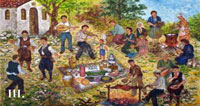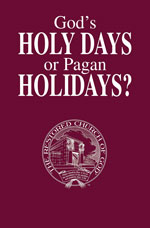It is boring. Unpopular. Has no beat—no repetition—no words or singing.
These are the usual reasons many people prefer to never give classical music a listen. Yet this type of music has a lot to offer once you get past basic excuses. Another reason for avoiding this genre? There is a lot of it—and it can seem impossible to know where to start!
One great place to begin is with symphonies. These are longform compositions played by an orchestra. Think of symphonies as movies or books. They are meaty, complex and take time to digest, but beneficial to your mental and emotional development.
Imagine always reading short stories but never reading novels or books. Or watching four-minute video clips and never sitting through a two-hour movie. Or snacking on granola bars and cookies all day but never sitting down for a fulfilling meal of steamed vegetables, steak and potatoes, and cheesecake!
Of course, there is nothing wrong with enjoying simpler music styles that provide instant enjoyment, but your brain needs longform items to help it develop a capacity to retain attention span and think deeply.
Yet the same problem crops up with symphonies as it does for all of classical music—there are a lot of them! Where should you start?
That is where Ludwig van Beethoven’s Sixth Symphony comes in. The work often tops lists of “classical music for those who hate classical music” because of how accessible it is for a newbie.
The 19th-century German composer called it “the Pastoral,” a term that specifically refers to land used for grazing sheep but can also refer to open areas of land. He coined it himself, one of only “two symphonies Beethoven intentionally named,” NPR reported. “Beethoven’s full title was ‘Pastoral Symphony, or Recollections of Country Life.’”
“His affinity for nature and his love for walks through the country outside Vienna [in Austria] were captured in the Sixth, as well as in the notes scribbled on sketches of the symphony.”
Some consider it the first piece that signaled the beginning of the romantic movement in music and art, because it depicted an actual scene. Prior to this era, symphonic music was written just for music’s sake, and was not usually attached to a particular scene or idea.
Typically, symphonies are divided into four sections, called movements. These are practically separate pieces in and of themselves, but each allow the listener a chance to “breathe” and for the orchestra to change pace. They generally follow a common formula:
- First movement: An allegro—moderately fast with the most important and contrasting musical ideas known as themes.
- Second movement: Slow and lyrical adagio (very slow) or andante (slow walking pace).
- Third movement: An upbeat minuet or scherzo in 3/4 time and usually the shortest movement.
- Fourth movement: a finale that can be anything from a presto (very fast) to a rondo, a dance-like form in 6/8 time. The finale almost always ends with a coda, a tailpiece that brings the entire symphony to a resounding close. Sometimes composers wrap all the themes of the previous movements into the last.
Beethoven broke with tradition in his Sixth Symphony and made five movements. Each has a descriptive title that were made known to the audience before the premiere (the first performance of a new work). As you listen to each movement, think about the kind of scenes, animals, plants and weather patterns Beethoven would have seen as he strolled through the Austrian country.
The first movement sets the scene: “Awakening of cheerful feelings upon arriving in the country.”
The second movement is slower. The composer labeled it, “Scene by the brook.” Listen to the flowing sound of strings throughout. Listen for bird calls: flute for the nightingale, oboe for the quail, and two clarinets for a cuckoo.
The third movement evokes a “merry gathering of peasants.” According to NPR, it “suggests a town band of limited ability playing dance music.” Listen for the intentionally written “error” toward the end of the movement that sounds like a person stumbling and falling.
The fourth movement was revolutionary in its time as it entirely depicts a storm. The section begins with rumblings from lower strings and timpani representing an approaching tempest—dark clouds, wind, distant thunder. This crescendos suddenly with tremolo of strings depicting rain and wind, timpani hits depicting lightning strikes.
The storm gradually passes with diminishing sounds of thunder. The final, fifth movement is labeled, “Shepherds’ hymn—Happy and thankful feelings after the storm.” An exuberant culmination with the full orchestra playing at full volume comes in the coda (the last couple of minutes), followed by a silent portion suggestive of prayer.
Symphonic Scenes

Photo: Getty Images

Photo: Getty Images

Photo: Getty Images

Photo: Getty Images

Photo: Getty Images






















